More so than any other art form, the theatre creates apocalypses, the destruction of worlds. It provides a means by which audience and performer alike can experience a shock—a transformative event at the level of the unconscious. This fact has long been understood in politics, as director Peter Brook explains in his seminal book, The Empty Space. “Instinctively, governments know that the living event could create a dangerous electricity,” he writes. “The theatre is the arena where a living confrontation can take place. The focus of a large group of people creates a unique intensity—owing to this, forces that operate at all times and rule each person’s daily life can be isolated and perceived more clearly.” The destruction of worlds can beget their creation as well though, as Walter Gropius understood when, in 1919, he formed the Bauhaus school in the immediate aftermath of World War I.
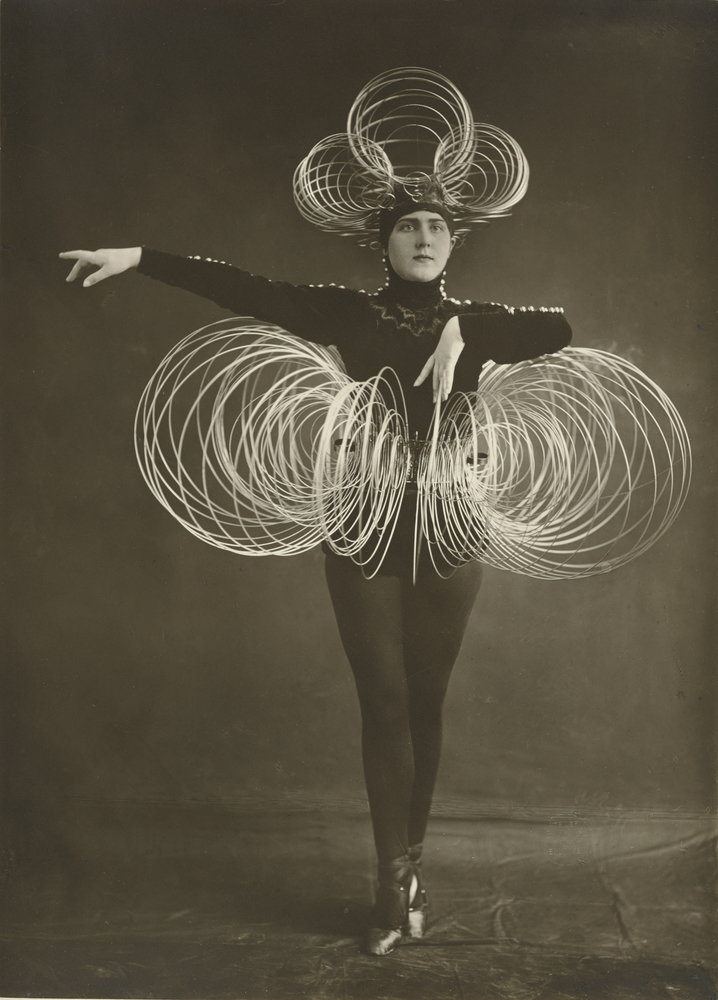
Gropius took inspiration from the medieval practice of craftsmen in the service of building cathedrals. Each with their own specific task, these guilds worked towards a common aesthetic, social, metaphysical, philosophical, and spiritual project: the construction of a symbol of the Kingdom of Heaven, a simulacrum of the world of Paradise in which they one day hoped to reside. The Bauhaus had a similar, though one could argue even grander, goal that extended beyond the walls of a single church. “Let us strive for, conceive, and create the new building of the future that will unite every discipline, architecture and sculpture and painting, and which will one day rise heavenwards from the million hands of craftsmen as a clear symbol of a new belief to come,” Gropius wrote in his manifesto. Championing clean, rational, and formal principles as a foundation for all design in part as a palliative to the devastating effects of war, he and his peers envisaged nothing short of building their own cathedral writ large—the “building of the future” not just as a physical site but as a total reconceptualization of both inner life and society.
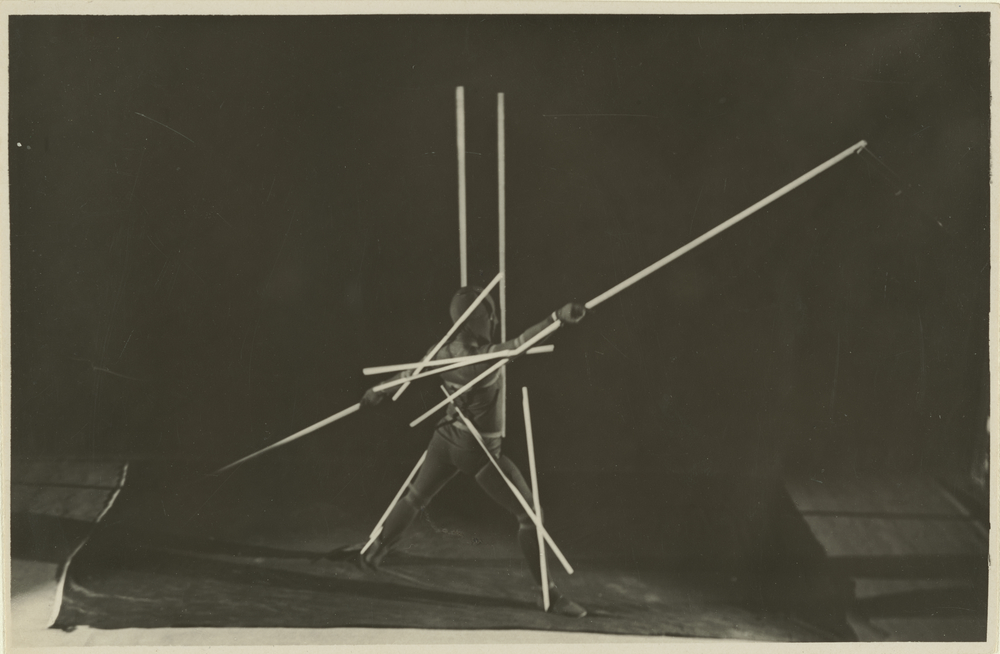
The admirable interdisciplinary quality of Gropius’s conception of the Gesamtkunstwerk as a synthesis of architecture, craft, and technology notwithstanding, his project had a critical gap: a lack of attentiveness to the human body itself and the phenomenological experience of space it engenders. It was this absence that the theatre workshop, led primarily by the German painter, sculptor, and choreographer Oskar Schlemmer, would fill when it was introduced into the curriculum in 1921 and given equal importance as other Bauhaus disciplines including sculpture, weaving, and ceramics. In abstract pieces such as Stick Dance and Hoop Dance, Schlemmer’s students donned oversized costumes that, through the performers’ movements within them, renegotiated both their and the spectators’ understanding of space and the body by virtue of a visual confrontation between stage and audience. Schlemmer “transform[ed] dancers and actors into moving architecture,” Gropius commented. Yet despite this and, more broadly, the theatre’s unique means of realizing the Bauhaus’s goals of transforming consciousness, Schlemmer is often marginalized in discussions of the school, now celebrating its 100th anniversary, and the awareness of the body that his work engenders is forgotten in many contemporary design and architecture departments.
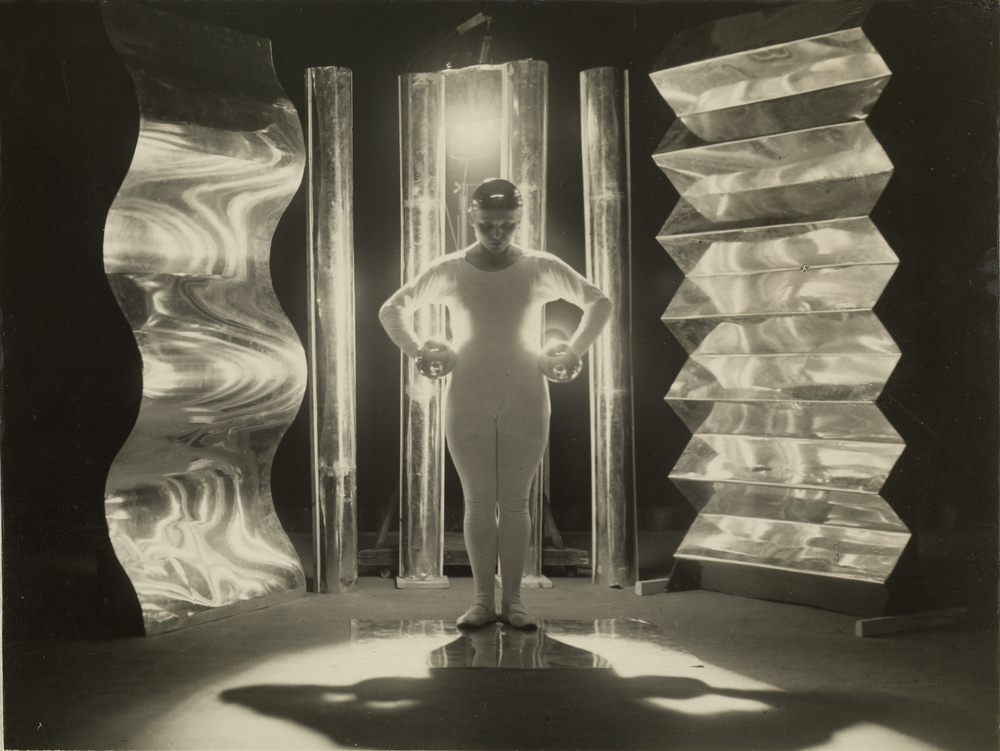
As a corrective, Krzysztof Wodiczko, Professor in Residence of Art Design and the Public Domain, and Ani Liu, a Lecturer in Architecture, have led a seminar-workshop at Harvard’s Graduate School of Design this semester entitled “Entanglement of Movement and Meaning: The Architect, Spatial Perception, and the Technological Body” that takes Schlemmer as its chief inspiration.
“The Bauhaus has always been celebrated for being interdisciplinary, but we do find that traditional education in architecture is quite focused on specific history, theory, or technology, and that all forms of art are not often encompassed,” Liu says. “While architects design so much for humans, there’s often little in the curriculum that makes you think about the body—how it moves, how it feels in different configurations and in relation to space. This is where Schlemmer is so interesting, because he brings theatre into architecture education. Take Stick Dance, which [our course] focused on, in which a dancer is strapped with twelve sticks that extend their limbs into space. It speaks to the relationship with the body and the environment around it, and how it feels to have radical extensions of your body.”
An attentiveness to the corporeal was far from aberrant to the early Bauhaus. Johannes Itten, the mystical artist known in particular at the school for his foundational preliminary course on form and color theory, led his students in gymnastics at the start of his classes, as did his colleague Gertrud Grunow, whose calisthenics also incorporated music. Itten, with Georg Muche, popularized amongst their peers the Neo-Zoroastrian religion Mazdaznan, which prescribes breathing and glandular exercises as well as a strict vegetarian diet punctuated by fasting. Lively parties and dances were a regular facet of Bauhaus life, too, with inventive themes such as “Beard, Nose, and Heart” and “Metal.”
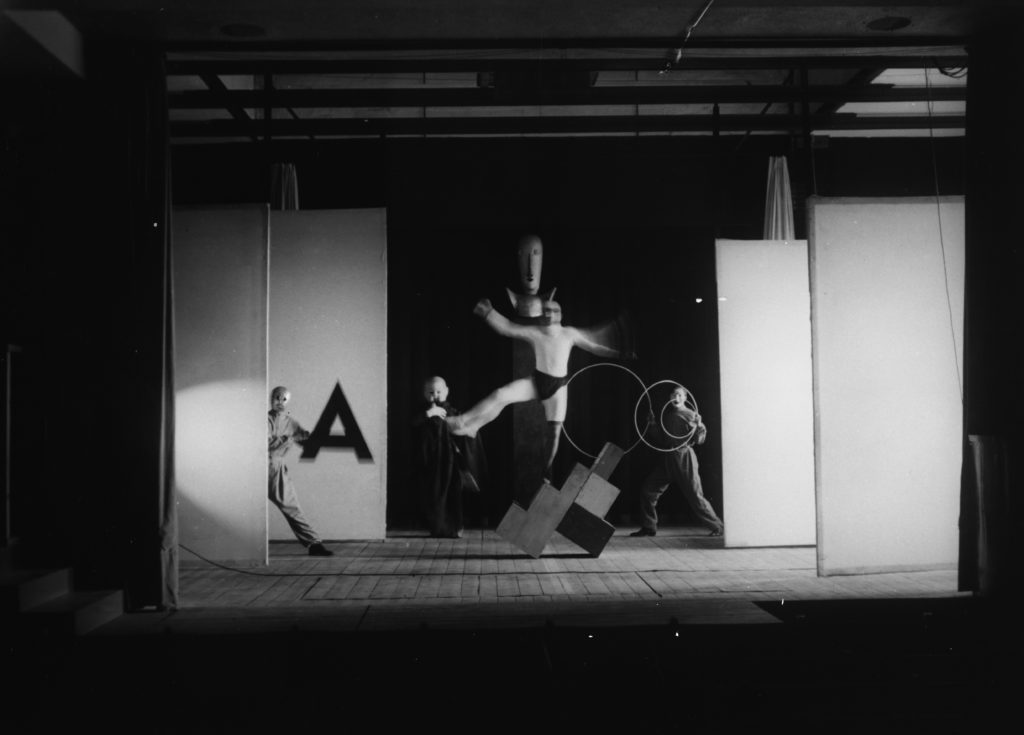
Schlemmer’s intervention through his conception of theatre as ultimate Gesamtkunstwerk—the fusion of sound, light, color, form, and movement in his case—was unique at the Bauhaus, however, in that it formulates an ontology centered on the body. “He was on the right track to acknowledge that through bodily experience and experiment we learn who we are, who we are becoming, and who we might or should become,” Wodiczko says.
Schlemmer and others at the Bauhaus believed that industry, nature, and the human shared a form of geometry, and if they could find that, then they could produce new projects that you’ve never seen before.
Schlemmer’s theatre did not succumb to what his fellow Bauhaus master László Moholy-Nagy criticized as the popular habit of “literary encumbrance.” Moholy-Nagy describes this misguided approach to theatre as “the result of the unjustifiable transfer of intellectualized material from the proper realm of literary effectiveness (novel, short story, etc.) to the stage, where it incorrectly remains a dramatic end in itself.” Rather, Schlemmer grounded his theatre in formal, mathematical principles. He believed that cubical space, like a stage, is governed by a complex geometric web that he referred to as “the invisible linear network of planimetric and stereometric relationships.” The human body also represents a mathematical system which creates a dialogue with that of the cubical space. Balance between them, he writes, arises from “movements, which by their very nature are determined mechanically and rationally. It is the geometry of calisthenics, eurhythmics, and gymnastics.” Space Dance is a quintessential example of this fusion: a precise grid visible on the stage determines the path of movements made by three performers; each dancer travels at a different, regimented pace while wearing exaggerated costumes of different colors, each of which represents a specific archetype; they each also wear uniform, robot-like masks which, with the costumes, hide all individual physical characteristics.
As indicated by the different speeds with which theses dancers moved, Schlemmer also believed that mathematics, color theory, and formal logic cannot alone access those higher truths he considered the theatre capable of illuminating. This rational system was a foundation onto which a no-less important “invisible” system could be mapped: “the laws of organic man”—“heartbeat, circulation, respiration, the activities of the brain and nervous system.” The synthesis of what he termed the Apollonian and Dionysian was encapsulated by his conceptualization of the Tänzermensch, or man-dancer who “obeys the laws of the body as well as the laws of space; he follows his sense of himself as well as his sense of embracing space.” Through this multi-pronged approach, transcendental truths previously unknown could be accessed. As K. Michael Hays, the Eliot Noyes Professor of Architectural Theory at the GSD, explains, “Schlemmer and others at the Bauhaus believed that industry, nature, and the human shared a form of geometry, and if they could find that, then they could produce new projects that you’ve never seen before.”
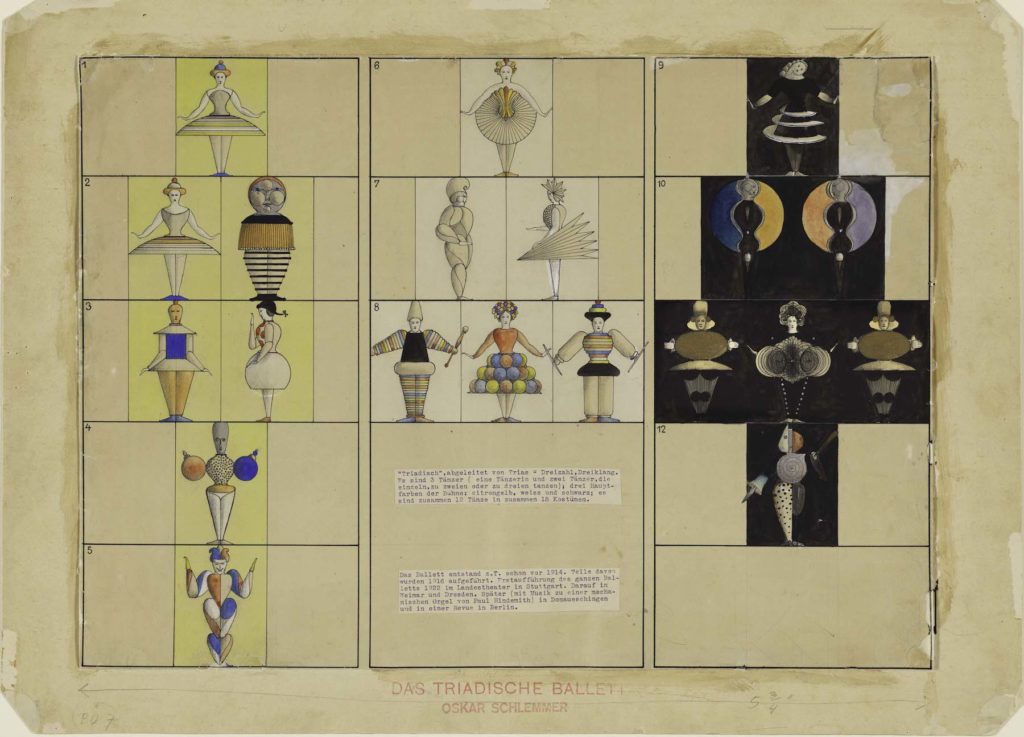
This Dionysian element was central to Schlemmer’s project. “He was very preoccupied by meeting the metaphysical needs of the spectator,” explains choreographer and scholar Debra McCall, who reconstructed the Bauhaus Dances using Schlemmer’s original notes and toured them internationally in the 1980s. “My teacher Martha Graham said that where the dancer stands ready is hallowed ground. She understood the sacred aspect of theatre, and Schlemmer felt very much the same. He believed that walking, standing, and sitting are very serious, and that [just] to see a figure on a stage is serious as well. The Stick Dance, for example, is the extension of the golden mean into space because our anatomical form is based on those proportions; it is sacred geometry in motion. When you see it and the other pieces performed, it’s like being in church. You will not hear a sound in the theatre.”
Perhaps surprising to many, Schlemmer saw play and experimentation as vital to achieving these goals. His characters were meant to be humorous, argues McCall, who discovered the dances’ lightness and their marionette qualities as she rehearsed them. Such a position was a political as much as an aesthetic act in a post-war Germany plagued by poverty and misery as well as the increasing sense of alienation brought about by industrialization and new technologies. “People were unprepared to see how they were going to live through this, but Schlemmer advocated play instead of melancholic reflection,” Wodiczko explains. “He recognized the alienation this world brings but acknowledged that there is not much we can do about these constraints. While we should not be unconditional technoenthusiasts, he argued that we have to try and move on without miserable isolation [from technology] or escapism. Instead, we should do the opposite: appropriate and engage with it, playfully, and try to figure out what good might come about and to what degree we can achieve some sense of ourselves, our abilities and capacities, with what we thought of as constraints.”
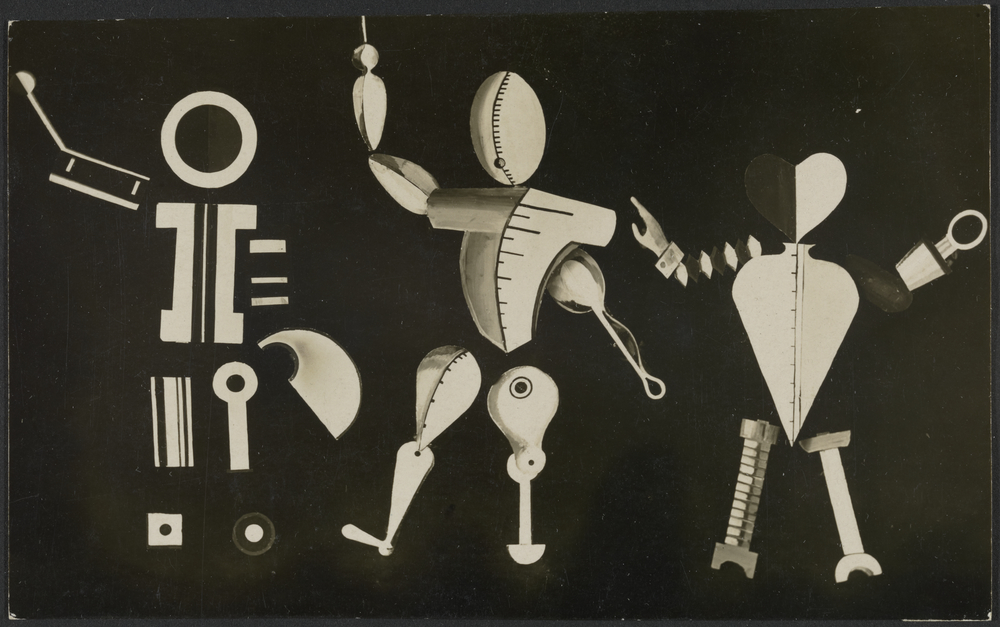
Wodiczko sees Schlemmer’s simultaneous skepticism and recognition of a potential crisis, a fugue with optimism and doubt in counterpoint, as a rare gesture and one which poses challenges in a design environment, such as any that inculcate the dominant ethos in Silicon Valley of celebrating new technologies without sufficient critical reflection regarding their effects. “There’s too much about ‘Let’s make it happen! Let’s do it!’” he continues. “That’s a kind of escape from [our] problems into a phantasmatic world of design. [Schlemmer teaches us] that these propositions have to be challenged once you are wearing a design or technology, once you are living with it.” This is especially the case today because, as Liu notes, “our technological landscape has moved beyond industrial and architectural design to the design of biological systems—design not just for the body but design of the body itself.”
The Stick Dance is the extension of the golden mean into space, because our anatomical form is based on those proportions; it is sacred geometry in motion. When you see it and the other pieces performed, it’s like being in church. You will not hear a sound in the theatre.
This ambivalence dissolves the oft-held preconception that design, and new technology in particular, always works in our favor. “Most of us assume that in any art, the real artist would have a certain freedom of expression and control of materials. But what begins to happen in the Bauhaus is the recognition that the objects of the external world—new material and new experiences—impact the individual and shape them more so than they shape the objects,” Hays says. Take mobile phones, and the cellular networks in which they envelope us, as a contemporary example and one which students explore in Liu and Wodiczko’s course. Hays considers Schlemmer at the forefront of understanding this relationship. “The idea that the object world has a determining force as much as the subject world does, and finding that balance, doesn’t seem to happen in painting in the same way. It happens more when furniture, design, and theatre come together.”
In keeping with his refusal to lapse into melancholy regarding the state of the world, Schlemmer took this critical awareness and employed it towards design that illuminates existential and metaphysical truths not despite of but rather through constraints.
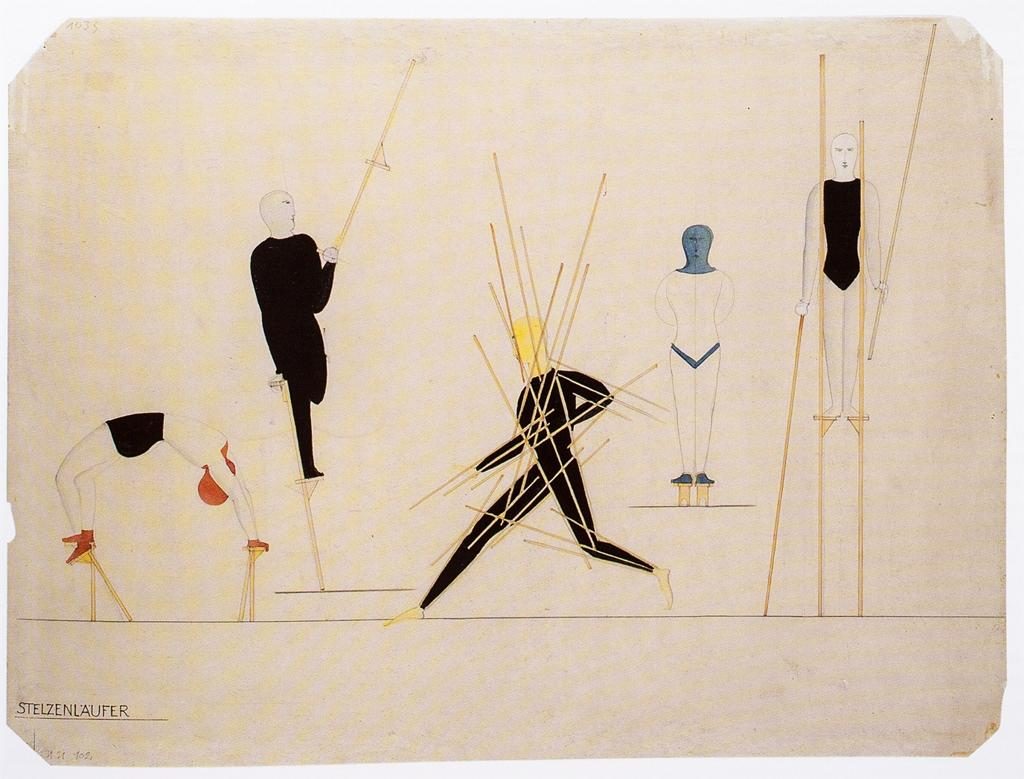
“Liu and Wodiczko’s students and I discovered that in Schlemmer’s dances, the body is so constrained by some of these devices that he applies to the dancer’s body, such as the sticks, that they actually impede movement, and the dancer must recalibrate their own body and adjust to the technology so that it can do what they think it should,” Hays describes. “The awareness of the body and its limits becomes more important than the awareness of the technology supporting the body or facilitating its movements. It’s the interruption and impediments that produce the artistic expression—which is not the current way of thinking about technology.”
“Design does not only solve problems or respond to some preconceived points and needs,” Wodiczko adds. “It can allow us to recognize what we think is natural and what is technological, with our bodies and in the world of artificial objects. Prosthetics are not simply there to ameliorate or perfect some deficient aspect of our body; they also create conditions for us to surprise ourselves with our abilities as humans and to create conditions for us to become new persons and to discover ourselves.” As Schlemmer writes in his essay “Man and Art Figure,” “Everything which can be mechanized is mechanized. The result: our recognition of that which cannot be mechanized.” Technology, playfully if not perversely, becomes a tool like any other by which we can not only reacquaint ourselves with the physical body but develop entirely new understandings of it and, by extension, ourselves.
Prosthetics are not simply there to ameliorate or perfect some deficient aspect of our body; they can allow us to recognize what we think is natural and what is technological, with our bodies and in the world of artificial objects.
In these ways, Schlemmer’s choreography and costumes foreground the human element that McCall considers central to his project and which was deteriorating in society through the accelerated rise of machines during his lifetime. “When Schlemmer was creating his dances in the 1920s, he was coming from a time when everything was three-dimensional: they were riding horses; people shaped and spaced their environment around the house, where outside they chopped woods and did things that made them use space with their bodies,” she outlines. “But with the advent of the machine—the lever, the pulley, the gear—the body began to work much more two dimensionally with its environment. And now we’ve lost that dimension as everything becomes digital. Our whole lives are lines, and we’re really using only one dimension in space. But when we’re gardening, cooking, playing with our dogs—when we’re doing pleasurable things—we feel that three-dimensionality that’s lacking in our functional, everyday life.”
The audience becomes aware of this three-dimensionality as well, as the entire space of the stage and its surroundings becomes a total unit, as if a kind of soup, in which movement into and around seemingly empty space is anything but. The sticks that extend from the body alter as much the body as the area around it, and in turn the spectators’ perception of and interaction with that space changes too. This is not theatre kept at a safe distance, with action confined only to what Schlemmer called the common “peep show stage.” This is a theatre that envelopes all who come into contact with it, and in turn demands new subjectivities from its participants. “The audience has to reeducate themselves about what an audience is,” Hays says. “They have to rethink their own participation and watch theatre in a way that’s different from watching a traditional narrative play.”
This type of reeducation is one of the apocalypses, one that enacts a total reconceptualization of oneself and one’s relationship to the world. It is never an easy change though. To quote Peter Brook once again, however hard the theatre tries to achieve this metamorphosis—an appropriate word, considering Schlemmer appreciated being thought of as a kind of magician—such a cataclysmic event cannot occur “so long as culture or any art is simply an appendage on living, separable from it and, once separated, obviously unnecessary.” Schlemmer tried to circumvent this attitude by connecting the theatre as close to the substance of living as possible, by infusing it with new, modern archetypes and incorporating all elements of being into the theatrical event. The result for the audience and performer, Wodiczko believes, calls for an adaptation of Descartes: “I dance, therefore I am.”
Read more about the celebration of the 100th anniversary of the Bauhaus at Harvard Graduate School of Design. Video by Maggie Janik.